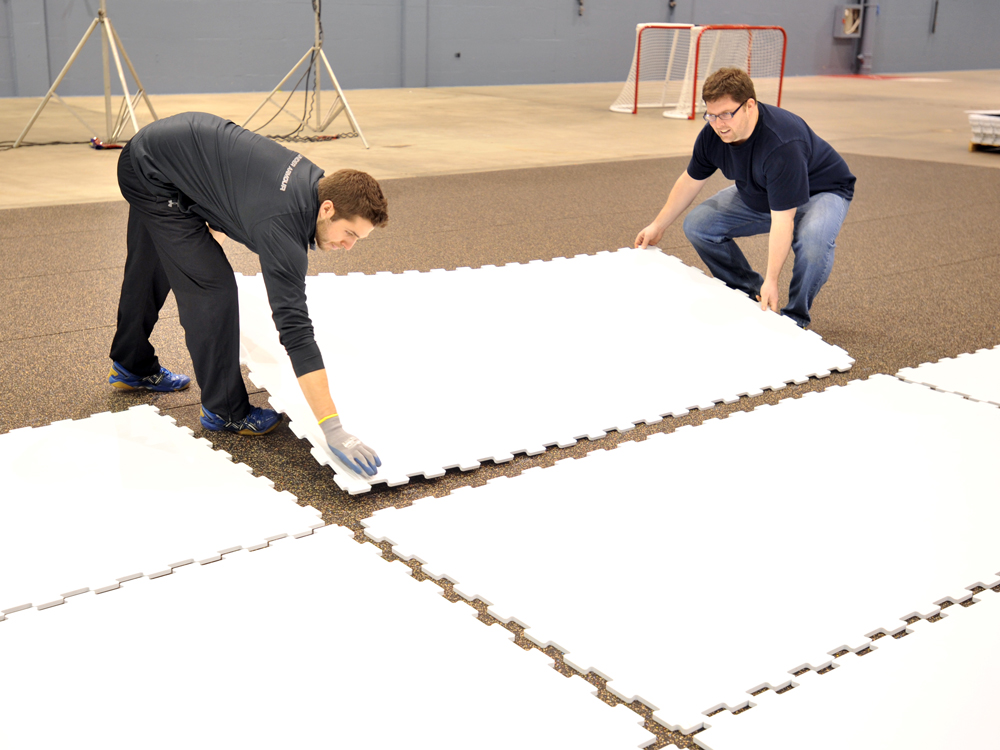Over the last six decades, synthetic ice has come a long way. In wake of the recent pandemic, millions of skaters and hockey players have chosen to invest in artificial ice flooring so that they can ice skate from the comfort of their own homes. For the people out there that are not familiar with the way that modern-day synthetic ice works, wondering how to make it slippery might be a topic of concern. However, after you read this you may understand how synthetic ice works, and the way that it can remain slippery and slick for as long as you have it.
Synthetic Ice Back in the Day
Back in the early 1960s, when synthetic ice was first introduced to society, there were a lot of issues that had to be ironed out in order for people to be able to successfully ice skate on it. The kind of plastic that was available back then was not at all like the polymer-based plastics that we have today.
When artificial ice was first created in order for skaters to use it there had to be a constant supply of lubricant added to the flooring. Not just one application and you are good to go, but a constant application. To make it worse, the type of lubricant that was available for the flooring at that time was a silicone-based solution that caused buildup and crud to form on the surface. So, not only was there a constant need for lubrication, but there was also a constant need for scraping and maintenance. It was not very functional, but it was a start.
Plastics Evolved
As scientists and developers worked together in order to create the perfect synthetic ice platform many years passed, and many discoveries were made. Polymers are naturally occurring structures that scientists were able to mimic to create synthetic polymers. Because of this, the creation of polymer plastics is possible. Through many years of trials and successes, modern-day science has been able to provide a type of synthetic ice that has its own lubricating compounds infused with the structure of the polymer. What this means is that, much like real ice, the polymer-based flooring will secrete lubricants as the skaters glide across it.
Real Ice Rinks
As skaters glide across the surface of frozen water they produce energy. This energy causes the ice that they skate across to melt. It doesn’t completely melt away, but it melts just enough to create a thin layer of water to come between the ice and the skate so that a natural lubricant is present. In the same way that friction causes heat for ice to secrete a water lubricant, the modern-day synthetic ice is designed so that when the skater glides across the surface it secretes a tiny bit of lubricant so that the skate can glide across the surface much like real ice.
Lubricants and Additives
In the past, it was necessary to add lubricants and other additives to your flooring in order to keep it slick and slippery enough for ice skates to work well on it. Today, there is no need to add anything to the flooring except your skates. The best way to keep your newer synthetic ice flooring nice and slick is to skate on it. Easy peasy.
***Sniper’s Edge Hockey loves Canada! We proudly ship all of our products to Canada and offer the same return policies as we do for everybody else. We realize the exchange rates for the Canadian dollar are not the best right now, so we’re trying to help by giving you free shipping and no customs/duty.***




